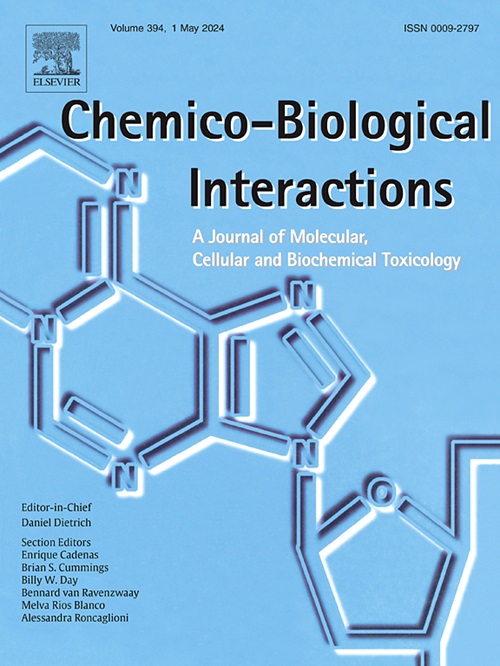七氟醚后处理通过调节反应性星形胶质细胞 STAT3 蛋白修饰减轻神经元缺氧缺血性损伤
IF 4.7
2区 医学
Q1 BIOCHEMISTRY & MOLECULAR BIOLOGY
引用次数: 0
摘要
星形胶质细胞活化在加速与缺氧缺血性脑损伤发展相关的神经炎症级联反应中起着关键作用。本研究旨在探究七氟醚后处理通过调节反应性星形胶质细胞信号转换器和转录激活因子3(STAT3)修饰来减轻神经元损伤的机制。研究人员使用改良的大鼠 Rice-Vannucci 模型和通过对原代星形胶质细胞进行氧葡萄糖剥夺而建立的条件培养系统,然后使用条件培养基培养神经元细胞系 SH-SY5Y,分别在体内和体外模拟 HI 损伤。在这些模型之后进行 30 分钟的 2.5% 七氟醚处理。Stattic 用于抑制 STAT3 磷酸化,(Z)-PUGNAc 或 OSMI-1 用于调节体外原发性星形胶质细胞中的 O-连-β-N-乙酰葡糖胺修饰(O-GlcNAcylation)。神经行为测试、Nissl 染色、CCK8 检测和流式细胞术检测细胞凋亡被用来评估神经元功能。免疫荧光染色用于检测星形胶质细胞的反应性和 STAT3 在细胞内的分布。免疫沉淀结合 Western 印迹技术用于评估 STAT3 的 O-GlcNAcylation 情况。蛋白表达和磷酸化水平由 Western 印迹法检测。用 ELISA 检测星形胶质细胞条件培养基中的有害细胞因子 IL-6 和 IL-1β。七氟醚后条件通过OGT的方式增强了HI损伤后星形胶质细胞STAT3的O-GlcNA酰化。O-GlcNAcylation与STAT3磷酸化之间的相互影响表明,O-GlcNAcylation抑制了STAT3的磷酸化。对星形胶质细胞的抑制作用抑制了 STAT3 的核转位,降低了星形胶质细胞的反应性,减少了炎症细胞因子 IL6 和 IL-1β 的释放,减轻了 HI 损伤后神经元的凋亡,提高了神经元的存活率。七氟烷后条件增加了星形胶质细胞 STAT3 O-GlcNAcylation 水平,从而竞争性地抑制了 STAT3 磷酸化。这使下游炎症通路失活,降低了星形胶质细胞的反应性,从而减轻了体内和体外神经元的高频损伤。本文章由计算机程序翻译,如有差异,请以英文原文为准。
Sevoflurane postconditioning mitigates neuronal hypoxic-ischemic injury via regulating reactive astrocytic STAT3 protein modification
Astrocyte activation plays a pivotal role in accelerating the cascade of neuroinflammation associated with the development of hypoxic-ischemic brain injury. This study aimed to investigate the mechanism by which sevoflurane postconditioning mitigates neuronal damage through astrocytes by regulating reactive astrocytic Signal Transducer and Activator of Transcription 3 (STAT3) modifications. A modified Rice‒Vannucci model in rats and a conditioned culture system established by subjecting primary astrocytes to oxygen glucose deprivation, followed by using the conditioned medium to culture the neuron cell line SH-SY5Y were used to simulate HI insult in vivo and in vitro, respectively. These models were followed by 30 min of 2.5 % sevoflurane treatment. Stattic was used to inhibit STAT3 phosphorylation, and (Z)-PUGNAc or OSMI-1 was added to regulate O-linked-β-N-acetylglucosamine modification (O-GlcNAcylation) in primary astrocytes in vitro. Neurobehavioral tests, Nissl staining, CCK8 assay, and flow cytometry for apoptosis were used to assess neuronal function. Immunofluorescence staining was used to detect astrocyte reactivity and the intracellular distribution of STAT3. Immunoprecipitation combined with Western blotting was used to evaluate the O-GlcNAcylation of STAT3. Protein expression and phosphorylation levels were detected by Western blotting. ELISA was conducted to detect the detrimental cytokines IL-6 and IL-1β in astrocyte-conditioned medium. Sevoflurane postconditioning enhanced the O-GlcNAcylation of astrocytic STAT3 following HI insult via the manner of OGT. Crosstalk between O-GlcNAcylation and phosphorylation of STAT3 showed that O-GlcNAcylation inhibited STAT3 phosphorylation. The inhibitory effect on astrocytes suppressed STAT3 nuclear translocation, reduced astrocyte reactivity, decreased the release of the inflammatory cytokines IL6 and IL-1β, attenuated neuronal apoptosis following HI insult, and improved neuron viability. Sevoflurane postconditioning increased astrocytic STAT3 O-GlcNAcylation level to competitively inhibit STAT3 phosphorylation. This deactivated downstream inflammation pathways and reduced astrocyte reactivity, thereby mitigating HI insult in neurons both in vivo and in vitro.
求助全文
通过发布文献求助,成功后即可免费获取论文全文。
去求助
来源期刊
CiteScore
7.70
自引率
3.90%
发文量
410
审稿时长
36 days
期刊介绍:
Chemico-Biological Interactions publishes research reports and review articles that examine the molecular, cellular, and/or biochemical basis of toxicologically relevant outcomes. Special emphasis is placed on toxicological mechanisms associated with interactions between chemicals and biological systems. Outcomes may include all traditional endpoints caused by synthetic or naturally occurring chemicals, both in vivo and in vitro. Endpoints of interest include, but are not limited to carcinogenesis, mutagenesis, respiratory toxicology, neurotoxicology, reproductive and developmental toxicology, and immunotoxicology.

 求助内容:
求助内容: 应助结果提醒方式:
应助结果提醒方式:


